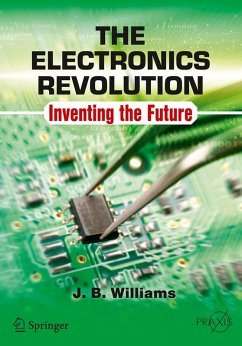This book is about how electronics, computing, and telecommunications have profoundly changed our lives - the way we work, live, and play. It covers a myriad of topics from the invention of the fundamental devices, and integrated circuits, through radio and television, to computers, mobile telephones and GPS. Today our lives are ruled by electronics as they control the home and computers dominate the workspace. We walk around with mobile phones and communicate by email. Electronics didn't exist until into the twentieth century.
The industrial revolution is the term usually applied to the coming of steam, railways and the factory system. In the twentieth century, it is electronics that has changed the way we gather our information, entertain ourselves, communicate and work. This book demonstrates that this is, in fact, another revolution.
The industrial revolution is the term usually applied to the coming of steam, railways and the factory system. In the twentieth century, it is electronics that has changed the way we gather our information, entertain ourselves, communicate and work. This book demonstrates that this is, in fact, another revolution.
"This is an excellent book with interesting information about just how electronics has shaped the world in the last century or so. It covers an impressive range of topics from timekeeping to the Internet and does so in a nicely digestible way, sufficiently nontechnical in detail, to make things accessible to those who are not primarily interested in the science." (Jeffrey Putnam, Computing Reviews, January, 17, 2018)








